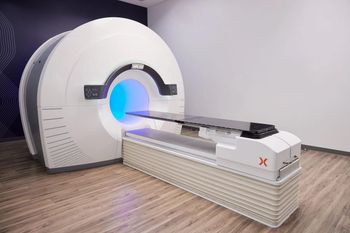
PACS spending outpaces IT investment
At a forecasted compound annual growth rate of 11.1%, spending on PACS technology is expected to zip past IT spending by healthcare providers over the next five years, according to a study from IDC. Based in Framingham, MA, IDC is a market intelligence
At a forecasted compound annual growth rate of 11.1%, spending on PACS technology is expected to zip past IT spending by healthcare providers over the next five years, according to a study from IDC. Based in Framingham, MA, IDC is a market intelligence and advisory firm for the telecommunications and information technology industries.
"Investment in the infrastructure to support PACS and PACS applications is growing much more quickly than IT. Because it's seen as an investment that enables providers to bring healthcare to patients faster and more efficiently, these investments get a higher priority. There is a much more visible return on investments," said Jocelyn Young, program manager for healthcare research at IDC.
The study defines PACS as technology that integrates medical imaging modalities and allows both patient and study information to be attached to a set of medical images. IT spending includes money spent on hardware, software, and IT services. The study, "U.S. Picture Archiving and Communications Systems (PACS) Forecast, 2003 ? 2007," is available at www.idc.com.
IDC used the following sources in its analysis of PACS spending trends:
· Surveys of and interviews with key healthcare IT and PACS vendors
· End-user surveys
· IDC's vertical market model
· Industry associations
· IDC studies
· Historical market data
· Public financial records
· Published news articles and press releases
Several factors contribute to the increase in PACS spending, including the growth in the volume of imaging studies, the authors said. As technology advances, so does the number of imaging exams and the need for facilities to adopt digital imaging.
Also driving the higher investment is the demand for storage and archiving systems that can handle the increasing number of images per exam, the study concluded.
IDC released an additional study forecasting healthcare providers' investment in IT. Because IT and PACS are converging, there is a bit of overlap, Young said. For IT spending, however, the investment numbers have dropped from the 5% to 10% growth rates of a few years ago to 3% to 4% for the next five years.
"IT spending, which first took place among large institutions and early adopters, will start to trickle down to the smaller providers," Young said. "What's been driving the current 3.4%-a-year growth is not only the top spenders but also the mid-tier organizations, which are in more of a ramp-up stage than larger providers."
Newsletter
Stay at the forefront of radiology with the Diagnostic Imaging newsletter, delivering the latest news, clinical insights, and imaging advancements for today’s radiologists.




























